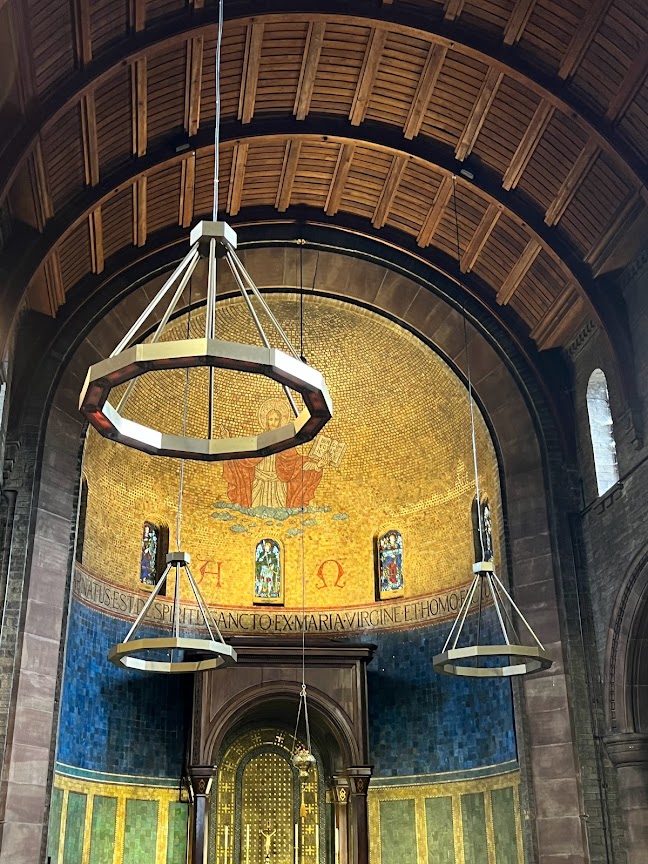Guest post by Jack Nevin
St Chad’s boiler system went out of service in 2021, leaving them reliant on additional heat sources such as portable heaters for two years. They decided to install a Herschel heating system in time for Christmas 2023. The warmth provided by the Halo heaters has transformed the space and brought St Chad’s back to a comfortable, well-loved community church.
In practical use, the heaters provide a pleasing and comprehensive heat which is not overwhelming or overly focused on one area. Heat is distributed in a conical manner (at settings of either 33, 66 or 100%), so a wide area is covered. The Halo system gets the heat to where it’s needed, and does not heat every corner of the church, rather heating the people and not the space. Thus, for building maintenance, some other form of heating is recommended to maintain a base-level when the space is not in use.
When St Chad’s used a gas boiler, the heating was switched on at 01:45 to start warming the building up for a service beginning at 10:45. The new Halo heaters can be switched on at 09:45 – just an hour before everyone is expected to be there. In this time, the space is heated, and seats are warmed to the touch. The financial results were immediate – though the Halo system is quite expensive and extensive fundraising/grant application was required – in the first full month of use, energy costs (total) were £430. This is compared to an average of £1600, based on the last seven Januarys (excluding the two years where there was no heat system).
Infrared heating has advanced significantly in recent years and is no longer the harsh, abrasively hot and attention-grabbing heat system which it was. The Halo heaters are tastefully ornate and match the environment of a traditional church building. As they are built in whatever colour requested – with the defaults being matte black, matte silver or a matte bronze – the heaters can be modified to suit the specific interior environment. LED lights (which can be controlled separately) and laser-cut iconography can also be added to further customise the Halo heaters based on taste and need. Customisation also includes control panels with timers, remote controls and pulley-systems to enable cleaning/maintenance of (optional) bulbs.
As part of a consultation, Herschel uses a scanner to make a capture of a church, creating a virtual map where specific areas of focus can be identified, and a speculative plan can be produced and consulted prior to project permission going ahead. Specific attention can be given to the placement of heaters based on areas to avoid (where flowers, relics or vulnerable furniture is kept) or that to focus on such as main areas of use and separate areas which require heat. Each project is taken on with dedicated and specific support, with a unique plan being devised as to individual specifications. There is currently a timeframe of three to five weeks for the installation period from start to finish. More than six hundred churches across the UK and Europe have expressed interest in installing Herschel Halo heating systems in their buildings.
If you are interested in learning more about the Herschel Halo heaters, please do contact Herschel to speak with a representative and organise specific advice.
